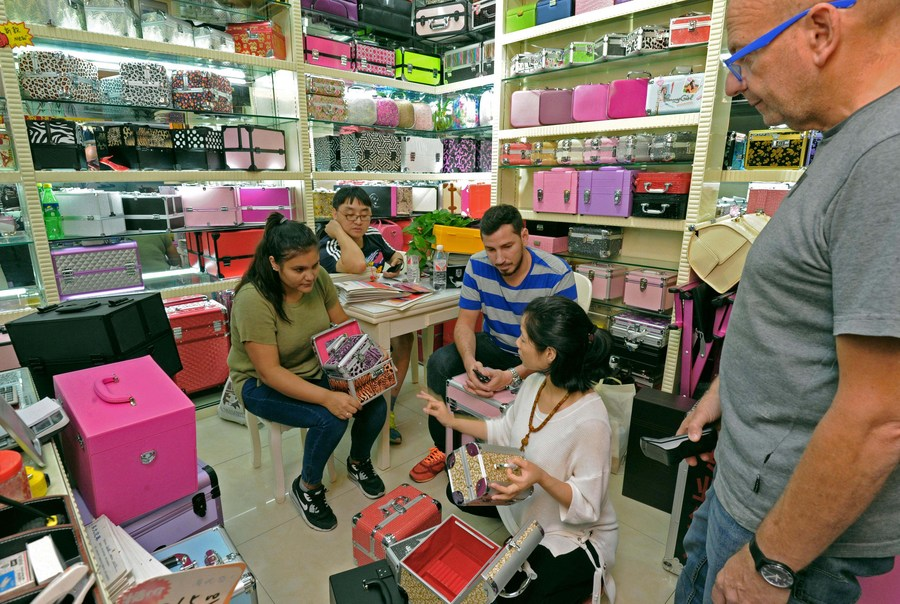BUENOS AIRES, April 23 (Xinhua) -- The world's highest-altitude solar park, built with Chinese financing and technology, has energized the fight against poverty in the remote corner of the town of Cauchari in Argentina's northernmost Jujuy province.
The Cauchari Solar Park, one of the largest projects of its kind in South America, is bringing technical training to local residents who invariably lack such opportunities, and making profits to improve the local educational system.
Built with financing from the Export-Import Bank of China and technology supplied by the Chinese company Shanghai Electric Power Construction (SEPC), the solar park began to provide the Argentine Interconnection System, or grid, with energy in September 2020, benefiting 160,000 families.
The solar park, with an estimated lifespan of more than two decades, is expected to generate significant income for Jujuy, with net profits valued at hundreds of millions of U.S. dollars, allowing officials to build up the public education system, Jujuy Governor Gerardo Morales said.
"We will have a profit on the order of 400 million dollars. We have already requested an educational loan of 307 million dollars from the Andean Development Corporation and the Central American Bank for Economic Integration, and we are building 258 new schools," Morales told Xinhua.
In addition, the regional government plans to build 2,000 km of new roads, repair 700 more schools, modernize classrooms with high-tech equipment, and create new teacher training programs.
"That means the project will let us build in four years more than a third of the schools that were built in Jujuy in 150 years," Morales said. "It is the only project that remunerates the indigenous communities, who own the land where the solar park is located."
"Ten years from now, the idea is for Jujuy to provide 3,000 megawatts of renewable energy. And the working model with Chinese companies has been very comfortable and easy for us," he said.
Paulino Martinez, who works in the area of the electromechanical operation and maintenance of solar panels at the park, told Xinhua that the initiative gave him the opportunity to learn new skills.
"Before coming here, I worked with livestock and agriculture ... I learned a lot (in the solar park) and I will continue with this because I like it," Martinez said. "I will continue with other projects here in Argentina or elsewhere."
From construction to operation, the plant has created 1,500 direct and indirect jobs, mainly for inhabitants of the province.
SEPC Project Manager Jorge Delgado said the solar park has provided locals with a chance to pursue a career other than in agriculture.
"Many of them had no work experience, because in the Puna (region), which is 4,200 meters above sea level, the main activities are agriculture and livestock," said Delgado.
"Today, many of them are part of the specialist electromechanical operation and maintenance team," he said.
The development of new energy sources and environment protection have been among the top objectives of the Argentina-China cooperation in the energy sector.
The Cauchari Solar Park is estimated to prevent 975,000 tons of carbon emissions per year, and that is why the SEPC has stressed the willingness of both countries to continue the development of alternative energy projects.
"(I want to) thank the Chinese company for knowing how to invest in this renewable energy project. It has made it possible to boost the energy supply by lowering our carbon footprint on the planet and has provided opportunities for Argentine people, especially nearby communities," Delgado said. Enditem




 A single purchase
A single purchase









